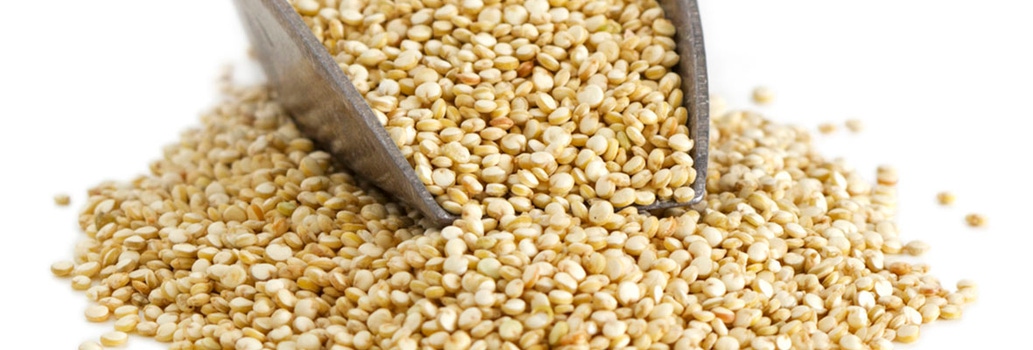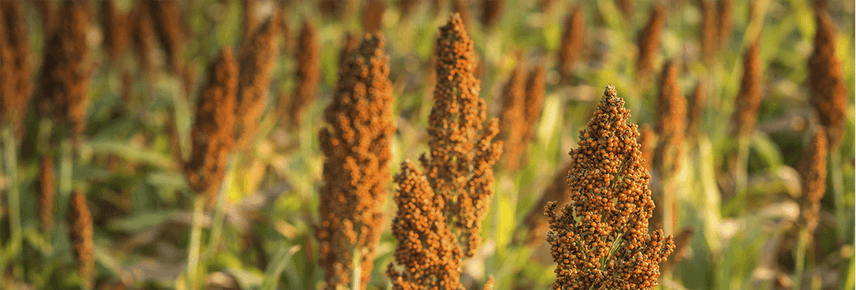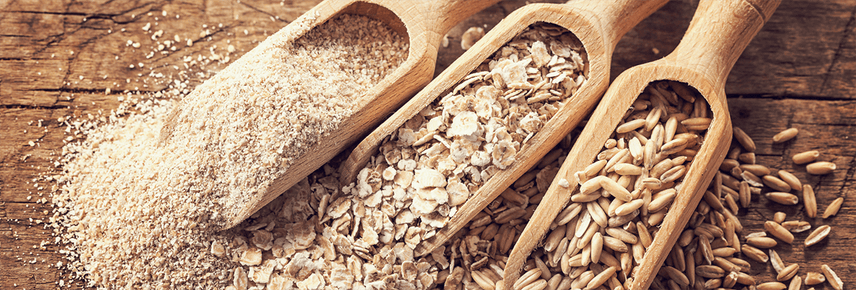A group of little grains often called ‘ancient grains’ are frequently touted as being considerably more nutritious than traditional grains such as wheat, oats and rye. These trendy grains are now a selling point for many products and are common on restaurant and cafe menus.
But with so much conflicting information out there, do you really get more bang for your buck when investing in trendy grains over traditional grains? The Grains & Legumes Nutrition Council compared the
nutrient profiles of some of the most well-known traditional and trendy grains to find out which group packs a superior nutritional punch!
What are ‘trendy’ grains?
Trendy grains have actually been around for years but have only recently enjoyed a surge in popularity, in part due to more people looking for alternatives to wheat. Many of these grains, including quinoa, amaranth and buckwheat aren’t ‘true’ grains but actually belong to the seed family and are known as pseudo-cereals. Many people think pseudo-cereals are nutritionally superior to the traditional grain, but they offer similar benefits to ‘true’ grains and are used in much the same way.
So do trendy grains really contain more protein?
One of the most common misconceptions is that trendy grains have much higher levels of protein than traditional grains, but they’re very similar. Whilst trendy grains quinoa and amaranth do top the list for protein content in our grain comparison, traditional wheat comes in a close third with a hefty 13.4g of protein per 100g, closely followed by rye. Here’s
a list to compare…
What about quinoa?
Another misconception is that quinoa, pronounced ‘keen-wah’, is the only grain to contain the complete spectrum of amino acids – in fact, all grains contain complete amino acids with quinoa having only slightly higher levels.
What about fat?
Traditional grains steal the show on this one with brown rice, rye, barley and wheat being lower in fat than trendy grains. And there’s further good news for wheat, with recent Australian research showing that Australian adults with the highest intakes of core grain foods, including breads and breakfast cereals made from wheat, had a similar waist circumference and no difference in Body Mass Index (BMI) compared to those with the lowest core grain food intake. While oats tops the list with the highest total fat levels in our comparison, much of this is healthy fat.
Surely trendy grains have more fibre than wheat or rye?
Again, traditional grains top the list with rye containing a whopping 14.6g of fibre per 100g, followed by wheat and barley, whilst sorghum, quinoa and amaranth have around half the fibre content of rye.
Wholegrain wheat, oats and rye can also help promote good gut health due to their prebiotic fibres, which encourage growth and activity of health promoting bacteria in the gut.
What about wheat?
Contrary to common perception, wheat is a particularly nutritious grain, even when compared to trendy grains like quinoa. Although wheat-free diets are popular with people avoiding gluten or cutting out carbs, this nutritious grain is easily accessible and readily found in many breads and breakfast cereals. And several recent studies have shown that individuals who regularly consume wholegrains (mostly wheat based) are at a reduced risk of developing type 2 diabetes, compared to those who eat less. To give you an idea of how two of the most well-known grains stack up, we’ve compared their nutrient profiles below…
Nutrient profiles of wheat and quinoa
| | Wheat (g per 100g) | Quinoa (g per 100g) |
|---|
| Protein | 13.4 | 14.1 |
|---|
| Fat | 1.4 | 6.1 |
|---|
| Fibre | 12.2 | 7.0 |
|---|
| Carbohydrate | 60.1 | 64.1 |
|---|
| Iron | 11.0 | 4.6 |
|---|
So what’s the verdict?
The takeaway message is that while many trendy grains do offer certain nutritional benefits, traditional grains offer comparable nutrients and in some cases have a more substantial nutrient profile. But whether you’re a fan of traditional or trendy grains or enjoy both, what’s important is ensuring we eat core grain foods 3-4 times a day and make at least half either high fibre or wholegrain.
Wholegrains love your whole body
| Blood | B2 for healthy blood cells |
|---|
| Brain | Magnesium for an active brain |
|---|
| Bones | Magnesium for strong bones |
|---|
| Digestion | Fibre for good bugs in your bowel |
|---|
| Energy | Iron to fight fatigue
Vitamin B2 and B3 unlock metabolism
Soluble fibre evens out the energy spikes and dips in your day |
|---|
| Eyes | Vitamin B2 for healthy eyes |
|---|
| Hair and nails | Zinc for great looking hair and nails |
|---|
| Healthy weight | Maintain a healthy waistline |
|---|
| Immunity | Zinc for immunity |
|---|
| Skin | Vitamin B21 and B3 for soft, smooth skin |
|---|
| Teeth | Magnesium for strong teeth |
|---|
| Muscles | Magnesium helps fuel muscles |
|---|
To benefit from the range of nutrients both traditional and trendy grains offer, mix it up every once in a while and enjoy a variety of grains as part of a balanced diet.
Traditional and trendy grains recipe inspiration
Warm capsicum, tomato, burghul and baked ricotta Weet-Bix™ and apricot bar Gluten free Weet-Bix™ banana choc loaf Rustic quinoa porridge Zucchini and quinoa frittata Adapted from Grains & Legumes Nutrition Council E-News 


